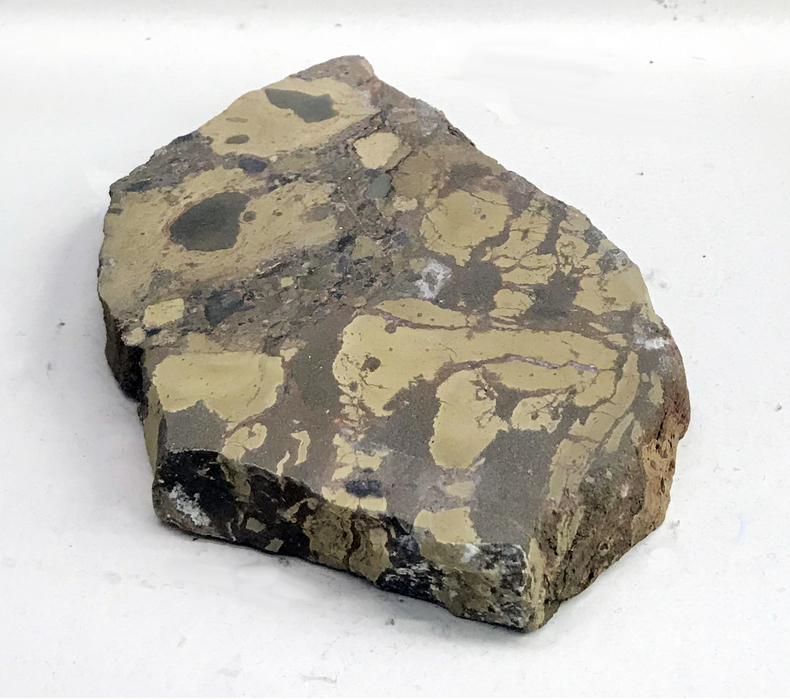Peperite
A rock subtype
This page is currently not sponsored. Click here to sponsor this page.
About Peperite
Name:
The name refers to the original description of a rock in Limagne, appearing to contain ground pepper. This original peperite ( described as “peperino”) is probably actually a pyroclastic, not a true peperite (Skilling et al, 2002).
The term ‘peperite’ or ‘Pépérite’ is most commonly used to refer to breccias, clastic rocks comprising both igneous and sedimentary components, which were generated by intrusive processes, or along the basal contacts of lava flows or hot volcaniclastic deposits with unconsolidated, typically wet, sediments (Skilling et al, 2002). It usually consists of highly irregular fragments of glassy igneous rock within sediments and/or the opposite. The Le Maître et al. (2002) definition is: "A local term for a tuff or breccia, formed by the intrusion of magma into wet sediments” (not a normal use of the word tuff). In contrast with tuffs and pyroclastic rocks, formed by explosive volcanism, it forms essentially in situ by disintegration of magma intruding and mingling with typically wet sediments. It can grade into hyaloclastite and unaltered sediment. Chilled and bleached margins on volcanic clasts are typical, and clasts can vary from blocky to fluidal. The textures may be due to quenching, hydromagmatic explosions, magma-sediment density contrasts, and mechanical stress as a consequence of inflation or movement of the magma.
Unique Identifiers
Mindat ID:
53060
Long-form identifier:
mindat:1:1:53060:4
GUID
(UUID V4):
(UUID V4):
67490ad5-c745-487e-8bc3-1511d558aa50
Classification of Peperite
Synonyms of Peperite
Other Language Names for Peperite
Italian:Peperino
Internet Links for Peperite
mindat.org URL:
https://www.mindat.org/min-53060.html
Please feel free to link to this page.
Please feel free to link to this page.





Antarctica